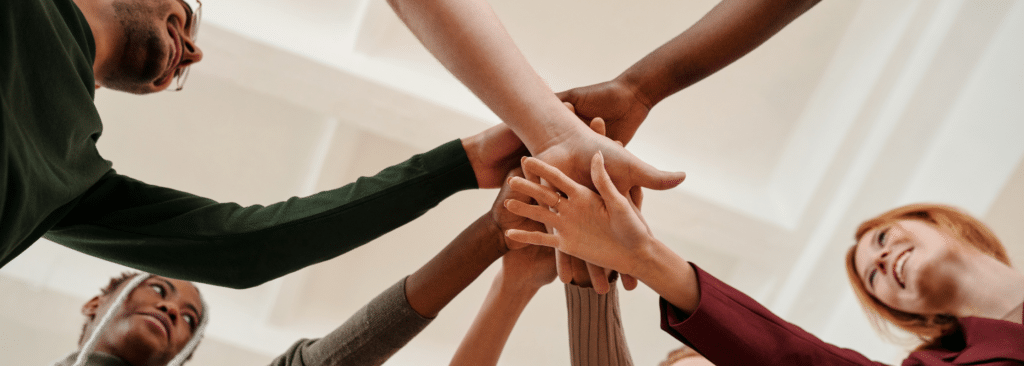The ACT is one of the two tests, along with the SAT, that are used by colleges in the admissions process. Although more schools have implemented test-optional admissions policies in the last several years due in large part to the COVID-19 pandemic, taking the ACT is still an important step for many high school juniors and seniors. If you’re reading this article, though, chances are you already know that—you’re here for tips on how to maximize your score in the ACT Reading section. Fortunately, your friendly neighborhood test expert has you covered.
ACT Reading is one of four sections on the test and therefore contributes one-quarter of the possible points toward your composite score; that makes mastering this section an important part of maximizing your score on the ACT. In this post, we’ll provide tips and shortcuts to help you manage your time effectively in the ACT Reading section so that you can find all the necessary information in the passage while still moving quickly enough to finish within the challenging time limit. Here are some of the best strategies and tips to help you boost your score in the ACT Reading section.
Table of Contents / Quick Reference Guide:
- Format Of The ACT Reading Section
- Questions & Passages On The ACT Reading Section
- A Tutor’s Tips For The ACT Reading Section
- Additional Tips For The ACT Reading Section
- How To Get Better At The ACT Reading Section
- Common Challenges On The ACT Reading Section
- Frequently Asked Questions About The ACT Reading Section
An Overview of the ACT Reading Section
One of the first tips we have for getting better at the ACT Reading Section is understanding the ins and outs of the section itself. Below, we’ll break down the format of the ACT Reading Section (including timing and number of questions), what types of passages and questions you’ll encounter, and some specific examples of each type of question.
Format Of The ACT Reading Section
The ACT Reading section consists of 40 questions that must be completed in only 35 minutes. If that doesn’t sound too scary, make sure you keep in mind that the questions will ask you about details from a passage, and that most of them won’t tell you where in the text those details are located. It’s therefore not quite as simple as ‘answer 40 questions in slightly less than a minute per question’—you’ll need to find the relevant information in the passage, read and process it, and then finally pick the answer choice that most closely matches it, ALL in less than a minute per question. To put it bluntly, that ain’t easy.
The final important tip about the structure of the ACT Reading section is that one of the four passages will always be split up into two shorter excerpts from two different texts, which will typically discuss different facets of the same central topic or theme. This comparison passage can be any of the four texts, and it will contain both questions that ask about only Passage A or only Passage B and questions that require you to compare and contrast aspects of both texts.

What Types of Passages Are On The ACT Reading Section?
The questions in the ACT Reading Section are divided up evenly between four passages, which means that each passage will contain 10 questions (if you had trouble with that calculation, check out our articles on the Math section of the test). These passages fall into two general categories: ‘Literary Narrative’ and ‘Informational’. Within those categories, however, the passages will also typically slot into consistent genres and be sequenced in a consistent order.
Check out the table below for more details on each type of passage. Passages are sequenced as they’ll show up in the section.
| Passage Name | General Subject; Examples of Specific Topics | Important Characteristics |
| Literary Narrative | Excerpt from a novel, short story, essay, or memoir | -Typically the only passage that may be fictional -Often focuses on the relationship between two or more characters -Narrative arc, an important tool to quickly find information for questions |
| Social Science | Article on social, political, or economic impact of an organization, person, or institution—civics, history, NGOs | -Paragraphs are typically longer and denser than those of Passages I and III -Less narrative-driven than Passages I and III; each paragraph generally focuses on one self-contained point |
| Humanities | Commentary on a cultural phenomenon and its impact—writer discussing writing, overview of piece of popular media, musician discussing music, analysis of an invention as it relates to culture | -Almost always nonfiction, but still more narrative-driven and less dense than Passages II and IV -Narrative arc an important tool to quickly find information for questions |
| Natural Science | Article on a discovery or phenomenon in one of the hard sciences—astronomy, biology, zoology, etc. | -Generally contains relatively high density of jargon; questions therefore very keyword-focused |
Are there general tips for approaching each type of passage in the ACT Reading section?
As you’ll notice in the table above, one of the biggest differences between the passages is whether they are more narrative-driven or more detail-driven, with Passages I and III (Literary Narrative and Humanities) falling into the first category and Passages II and IV (Social Science and Natural Science) making up the second. Because of this difference, you may find it helpful to practice a slightly different strategy for each pair of passages.
For Passages II and IV, I typically recommend that students start with the two-pass method, which we’ll cover in more detail below. This technique focuses on only reading what the questions dictate that you need to read, which is a good fit for these two passages: because of the high density of recognizable keywords, it’s usually easier to quickly figure out where to look for each question than it is in the two more narrative-driven passages.
Related Reading: How Much Does The ACT Cost?
In Passages I and III, I often recommend that students start with a quick skim of the text: take no more than 60-90 seconds to look through the passage from top to bottom, focusing on getting a general sense of the structure, the characters (in the case of Literary Narrative), and the argument (in the case of Humanities). Then, use that mental outline to help you efficiently access the information required to answer each question.

Tips for the ACT Reading Section
Now that you understand the overall structure of the ACT Reading Section, the next step is effectively prepare for it. Fortunately, we’ve listed a slew of ACT Reading tips below, all developed in our years of experience as ACT Tutors.
ACT Reading Section Tip #1: Use the two-pass method
As a general rule in all sections of the ACT, you should strive to address the section in the way that makes the most sense for you, not necessarily in the way the test lays it out for you. In the Reading section, that concept applies primarily to the order in which students approach the questions.
As a general paradigm, think of the questions in ACT Reading as falling into two categories: broad questions and narrow questions. Broad questions require you to understand a substantial portion of the passage to be able to answer them, while narrow questions can be answered with a relatively small amount of reading, ranging from a sentence to a couple of paragraphs.
The ACT frequently front-loads its passages—putting the broad questions at the beginning and the narrow questions after—in order to make students think that they need to read the entire text before they can start the questions. In reality, though, it pretty much always makes more sense to do the narrow questions first. That allows you to build your understanding of the passage without doing a ton of unnecessary reading; then, when you move to the broader questions, you can use the themes you discovered in the process of answering the narrow questions to make the broad questions quick and easy.
To implement the two-pass method, start each Reading passage by quickly sorting the questions into two buckets: first-pass (narrow) questions and second-pass (broad) questions. Then, answer the first-pass questions in order of what portion of the passage they ask about (so trying to answer those that require information found in the beginning of the passage first) before finishing with the second-pass questions.
Want An Easy Way To Improve Your ACT Reading Score?
ACT Reading Section Tip #2: Read like a robot
Relatively early in almost every program, while I’m reviewing a Reading passage with the student, I hear some variation of this statement: “That answer can’t be right, it’s too obvious.” This objection—though totally understandable coming from students who are used to spending English class reading critically, looking for subtext, and analyzing the author’s deeper purpose—couldn’t be farther from the truth. In fact, if an answer is “too obvious to be right”, that typically means that it’s even more likely to be correct.
Here’s what you have to remember about ACT Reading: this section moves fast. Sure, if you’ve been paying attention, you already knew that, but you probably haven’t thought about the trickle-down effects of that fact. Because the pace of the section is so aggressive, the ACT can’t also make the questions super in-depth and intricate; otherwise, almost nobody would get many right, and that would screw up their scoring curve. So they have to craft questions that are possible to answer correctly in a short amount of time, and that means building in shortcuts.
The most significant of those shortcuts is the superficiality of the questions. Most problems in this section require next to no analysis, or really any thinking of any sort; they’re essentially just ‘scavenger hunts’ that ask you to find a particular piece of information in the passage, bring it back to the question, and match it to the correct answer choice. So to get a good score on the ACT Reading section, don’t think about how you would analyze the text in your English class. Instead, just choose the answer that most closely corresponds to the idea or detail in the text for each question. And if you catch yourself thinking “this answer is too obvious to be right”—that’s probably the right answer!
ACT Reading Section Tip #3: Read for context
One of the ways that the ACT introduces some amount of misdirection to their questions is through the use of context. You’ll notice when working through a passage that several of the questions flat-out tell you where in the text to look. For example, the omnipresent vocab-in-context question: “In line 11, the word gaslight most nearly means which of the following?”
The line numbers they give you in these questions and others like them aren’t exactly wrong, but they are… let’s say ‘misleading.’ Typically, the line number in the question refers to the line that contains the exact word or phrase the question is asking about; however, that’s not all that is necessary to get the correct answer. Most of these questions require you to understand how that word or phrase fits into what’s around it so that you can interpret it correctly.
As a rule, you should read a few sentences above and a few sentences below any line number that is given to you in a question. So if we really want to understand how the author is using ‘gaslight’ in our earlier example, we might want to start by reading lines 8-14; if that still doesn’t feel like quite enough information, we can seek out more as needed.
Other Important ACT Reading Section Tips
Practice active reading—to a point
As of the time this article was published, if you’re taking the ACT domestically, you’ll still be testing with pencil and paper. For many students, this is actually a big advantage in the Reading section especially, as it allows you to actively engage with the text on the page. As a helpful ACT Reading section tip, remember that active reading can be very useful for some testers.
Active reading can take different forms based on the individual student’s preferences. As they read through the questions, some students like to jot down question numbers in the margins of the passage in order to provide a “road map” of which parts of the text are being tested. While skimming Passages I and III, students may find it helpful to underline important quotes or major transitions. Other students will even jot down key words or ideas after reading a paragraph in order to help them process and remember what they read.
There’s no right or wrong way to read actively, so feel free to try out different approaches and find what works best for you. It’s really important to remember, however, that you’re operating under a strict time limit in this section—don’t spend so much time jotting down notes and underlining that you run out of time to actually answer the questions!
Manage your time effectively
At the risk of beating a dead horse (wow, that’s actually a really dark idiom when you think about it), say it with me one more time: the primary challenge of the ACT Reading section is the aggressive time limit. Because of that, one of the most important general tips for the ACT Reading section is ‘manage your time well!’
There are a number of different ways that this can manifest within the section. We’ve already covered the importance of sequencing the questions in the way that is most efficient for you, and the same rule applies to the passages as well. If you consistently have trouble with the Literary Narrative passage, or if you find that the comparison passage tends to take you more time than the others, then save that passage for last. Doing your three strongest passages first ensures that you’ll get to the questions you’re most likely to get right and bank those points; then, once you get to the passage that’s most difficult for you, you’ll have the psychological comfort of knowing that there’s nothing left besides that passage, allowing you to throw all of your remaining time at it.
Finally, it’s essential to remember that you have to keep moving. Give yourself a time goal for each passage (you have an average of 8 minutes and 45 seconds for each passage if you’re testing with regular time, but some passage-types may move faster for you than others) and stick to it; if you’re stuck on a final question when you hit that time limit, take your best guess and move on. Every question counts the same, and you can’t compromise your timing in the rest of the section for the sake of one point.
Remember your basic test-taking strategies
In addition to the Reading-section-specific tips that we’ve covered, you should always remember that general test-taking strategies apply for this section as well. In particular, process of elimination (POE) is an essential weapon in your arsenal on every part of this test, and Reading is no exception. Many questions in this section will have one correct answer, one ‘good’ wrong answer that almost works, and two answers that really don’t make much sense at all if you read the relevant portion of the passage. Starting each question by looking for the answers that stand out to you as being the most incorrect can be a great way to whittle down the choices, giving you less to think about and improving your odds if you need to guess.

How to Get Better at the ACT Reading Section
As you’re beginning to practice for the ACT Reading section, follow these tips to structure your practice:
1. Familiarize yourself with the section
I typically recommend that students start by completing a couple of untimed Reading sections. This allows you to get used to the structure of the section and the general question-types, begin to identify the patterns that define the section, and lay the strategic foundation of your approach to each passage.
2. Add in the time element
Once you feel confident in your general grasp of the section, complete a full practice Reading section, moving as quickly as you can, and run a stopwatch while you do it. Then, calibrate your future work according to how much time that practice section takes you. If you were over time, give yourself a time limit that’s a minute or two faster for your next section, and repeat that process until you’re practicing with the correct timing. If you finished the section too quickly, aim to slow yourself down for your future attempts. Remember that there’s no prize for finishing first, and on test day you won’t be able to move on to the next section early anyway, so you might as well use all the time you have.
3. Identify your weaknesses
Look for patterns in your practice. Are you consistently taking longer on one type of passage than on the others? Is your accuracy generally lower on a particular passage or particular type of question? The answers to these questions can help you tweak your approach until it’s optimized for your specific strengths and weaknesses.
4. Practice, practice, practice
Repetition is essential to improving on every section of this test, but it’s especially important in Reading given the section’s fast pace. Most students will need to look for every opportunity to shave those precious seconds off of their process, and knowing the section inside and out can help with that. To that end, The ACT Official Prep Guide contains 7 official practice tests, and more are available online. There are also a number of third-party content providers whose practice tests, while not as good as the real thing, are high enough quality to provide useful reps.
Remember that practice by itself isn’t enough, though—it’s crucial that you try to learn from each section you complete. Build time into your practice for you to review both your mistakes and your timing. For every question you missed, ask yourself why your answer was wrong and why the correct answer was better. If you were unable to finish the section within the time limit, determine where you lost time. Was it a particular passage that slowed you down, a particular question you got stuck on, or some part of your process that took you longer than it should have? Take this information with you into your next practice section and use it to inform your approach.
If you follow this approach to the section and practice these ACT Reading section tips consistently, you’ll be in a great position to get a good score on ACT Reading. If you’d like more specific advice on how best to approach the ACT Reading section or strategies in any other area of the test, head over to Inspirica Pros’ ACT headquarters. Our squad of test gurus would love to help you crush the ACT.
Common ACT Reading Section Mistakes to Avoid
While you’re reviewing your completed practice sections, keep an eye out for these common Reading section mistakes.
- Don’t overthink. Remember, this is reading comprehension, not math or grammar. There’s not a right answer or a wrong answer when it comes to interpreting literature, which means that to make them objective (and answerable within the time limit), reading questions have to be as superficial as possible and involve a minimum of interpretation. When in doubt, pick the answer that requires you to do the smallest amount of mental work to justify it.
- Watch out for extremes. Oftentimes, the test will take a concept or opinion that is present in the text and create incorrect answer choices that crank that idea up to 11. Remember that there’s a big difference between ‘Statement X can sometimes be true’ and ‘Statement X is always true’, or between the author’s tone being ‘optimistic’ and it being ‘elated’. That’s not to say that extreme answers will never be correct, but the burden of proof you require from the passage before picking one of those choices should be much heavier.
- Don’t just play the ‘word recognition’ game. One of the ACT Reading section’s favorite tricks is to create answer choices that include a specific and recognizable word or phrase pulled straight from the passage but use it incorrectly. Remember that for an answer to be correct, every element of it has to hold up; don’t pick an answer choice just because you recognize the wording, be sure that the idea it’s conveying lines up with the passage.
Frequently Asked Questions About The ACT Reading Section
Is it hard to get a 36 on the ACT Reading section?
Short answer—yes. Because the ACT Reading section is one of the two shortest sections of the test, your margin for error when it comes to getting a perfect score is typically very small. On some of the more generous scoring curves I’ve seen, you can miss two or even three questions and still get a 36; however, there are many other sections where missing even one question will drop you down to a 35. As a general rule, if you want to have a good chance of getting a 36 on the ACT Reading section, you should aim to miss no more than one question.
How can I learn to read faster for the ACT Reading section?
If you’re looking for tips to improve your speed on the ACT Reading section, first focus on your approach to the passages and the questions. Try out strategies that focus on reading only what the questions require, such as the two-pass method I described earlier in the post.
If you’re still having trouble and feel like you need to increase the speed at which you read, one way to do that is to practice skimming while retaining as much information as possible. Search for articles or short stories of a similar difficulty to the ones on the ACT Reading section (e.g. from Popular Science or The New York Times), cut them up (not literally) into excerpts that are 80-90 lines long, and then start practicing. Give yourself 90 seconds to skim through the passage; then, close the document and write 3-5 sentences that summarize as much of the text as possible. Rinse and repeat.
You can vary that exercise by switching up the way that you skim. For example, instead of trying to treat the whole passage as equally important, read the first two sentences and the last sentence of each paragraph normally, then skim through the rest. The best tips to improve your reading speed for the ACT Reading section are A) try different things and see what fits your brain the best, and B) practice, practice, and practice some more.
Does the SAT or ACT have a harder Reading section?
The answer to this question depends on what your strengths and weaknesses are as a reader and test-taker. As we’ve discussed (a LOT) in this post, the primary challenge of the ACT Reading section is its speed. In contrast, the SAT Reading section gives you more time per question, but the questions typically require more critical reasoning and are less superficial. If you’re a fast reader or are very good at skimming text while retaining information, you’re likely to find the ACT Reading section easier. If you’re a slightly slower reader but a good problem-solver and test-taker, you may find more success on SAT Reading.
Related ACT Resources:







